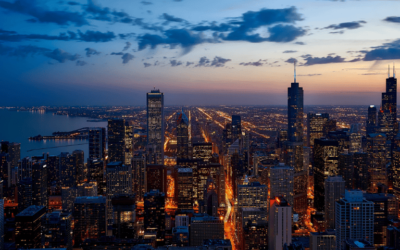As 2020 gets closer and closer, we thought we would be writing about the new energy efficiency standards for lamps and the incandescent light bulb ban. But due to the current administration’s weakening of the Energy Independence and Security Act (EISA) we have a bit of a different story to tell. To get everyone up-to-speed, we are going to start at the beginning.
The Beginning and End of the Incandescent Bulb Ban
In 2007, President George W. Bush signed the Energy Independence and Security Act (EISA) into effect. This was put into effect in an effort to reduce energy-inefficient lighting. The first course of standards phased out 60-watt incandescent bulbs between 2012 and 2014. I am sure most everyone remembers the 2013 CNN article Obit: RIP, light bulb, which caused a huge uproar in the public because the government was taking away their $.25 incandescent light bulb. Despite this bit of “Fake News,” the government did not implement an incandescent light bulb ban. What it really came down to was a manufacturing standard that required they stop making lamps that did not meet energy standards. Which for the most part, consisted of tungsten filament incandescent light bulbs. Energy Star explained the restriction in this way:
“The standards are technology-neutral, which means any type of bulb can be sold as long as it meets the efficiency requirements. Common household light bulbs that traditionally use between 40 and 100 watts will use at least 27% less energy by 2014.”
In 2018, California preemptively placed in effect the second course of EISA restrictions. These restrictions required A-shaped General Service Lamps (GSL’s) to achieve a minimum efficacy of 45 lumens per watt. The rest of the country was slated to follow suit in 2020. In September of 2019, the Trump administration significantly weakened the EISA. This administration eliminated the requirements that light bulbs sold within the U.S. had to be either LEDs or fluorescent and meet the new efficiency standards. These standards would have eliminated inefficient bulbs and would have saved the equivalent of at least 25 large power plants worth of electricity nationwide.
According to an estimate by the National Resources Defense Council, this would have been enough energy to power all of the homes in Pennsylvania and New Jersey. Jason Hartke, president of the Alliance to Save Energy, a nonprofit coalition of business and environmental groups said, “The Energy Department flat out got it wrong today. Wasting energy with inefficient light bulbs isn’t just costly for homes and businesses; it’s terrible for our climate.” Following this new development, 15 state attorney generals and several large environment groups sued the Department of Energy over the reduction of the EISA. In November of 2019, the California Energy Commission (CEC) voted to move forward with the last course of EISA restrictions. Starting January 1, 2020, the new restrictions on general service lamps will start in California.
Which Lamps and Incandescent Bulbs will be Banned?
Let’s break down what this all means. If you are in any state other than California, you are at the same place you are right this second. The lamps that are currently available will remain available to purchase and utilize. Now on to California. For those of you in California, starting January 1, 2020, all general service lamps (GSLs) must have an efficacy of 45 lumens per watt. Now, this is just for them to be SOLD in California, not to be utilized. This standard included reflector lamps and candle-shaped lamps. Here is the big kicker: Almost ALL halogen and incandescent bulbs will NO LONGER meet the California standards. There are a few exceptions, such as CFLs and LEDs.
For more on the inefficiency of non-LED lamps compared to LED’s, our Lighting and LED Product Education Center has lamp and application-specific pages to help you navigate your options.
Here is a list of lamps that will no longer meet the California standards.
- A19 3-way incandescent lamps
- All A19 halogen
- All high lumen A-shaped lamps
- All reflectors: R14, R16, R20, BR30, and BR40
- All PARs: PAR20, PAR30, and PAR38
- All MR16: bi-pin and GU10
- Décor lamps (B-shape, C-shape, F-shape, G16.5, G25, G30) between 310 and 3300 lumens
- Rough service, shatter-resistant, and vibration service lamps (such as A19 silicone coated)
- Candelabra and intermediate base lamps between 310 and 3600 lumens
Please Note: There are some exceptions, including specialty lamps like appliance lamps, bug lamps, black light lamps, and more that are excluded for the standard.
We understand this can be a confusing time. We have been hearing about the incandescent light bulb ban for years, and it has not adversely affected the majority of the market. This is just taking us one step closer to a more cost-effective, energy, and maintenance-saving LED solution for everyone. If you would like to discuss any lighting concerns with one of our Lighting Experts, call 610-558-9773, email [email protected] or schedule a call.







































0 Comments